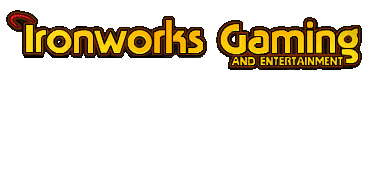
 |
THACO. What the heck is it? I've had the game for months and i still dont know what it is.
and...my theif has a x3 in backstabing, does that mean he gets to strike at a target 3 times until he leaves the shadows? |
THAC0 is to hit at armor class 0 it just means the lower it is the more likely you are to hit a person. Backstabbing is a theif comes out of the shadows and does immediant damage because the attacked cannot see him, Backstabbing x3 means it will take the damage from backstabbing and multiply x3 my backstabdamage is x5
|
This helped me understand it
Quote:
[ 07-17-2002, 01:31 PM: Message edited by: Sharkannon ] |
thanx
|
I think i get it, but what about lore...?
|
I know lore affects your ability to Identify things (without the need for a spell).. not sure what else
|
if you have a high enough lore, you have heard of certain magical items and know what they do.
anyway, the one thing i want to know is what the two numbers after the 18 on a high stat do. |
I'd like to know what the number after the 18 in stats (eg.18/54) is aswell! I've always wondered since I played Baldur's Gate five years ago!
|
Only strength can have a percentile score, like 18/35. Basically, any other character can only have a maximum strength of 18. Fighters, rangers, and paladins, however, can have this percentile strength, showing they're even more powerful. The higher the percentile, the better your "to hit" and damage bonuses.
It breaks down like this: STR 18 = +1 to hit, +2 damage STR 18/01 - 18/50 = +1 to hit, +3 damage STR 18/51 - 18/75 = +2 to hit, +3 damage STR 18/76 - 18/90 = +2 to hit, +4 damage STR 18/91 - 18/99 = +2 to hit, +5 damage STR 18/00 = +3 to hit, +6 damage Percentiles also affect your carrying capacity, open doors, etc. Strength spells cast on fighter-types increase strength by these percentile ranks, so a fighter with STR 17 getting 3 bonus strength points from the spell would have 18/51 strength for the duration of the spell. Other classes get a max of 18 strength from the spell. 1st and 2nd edition D&D used these percentiles for strength, and later introduced the cavalier class, which had percentiles in dexterity and constitution, as well. 3rd edition eliminated the percentiles, as well as eliminated the cap for potential strength (a 1st level half-orc thief in 3e can have a 20 strength, and the rules give ratings for a 45 strength!). |
| All times are GMT -4. The time now is 08:15 AM. |
Powered by vBulletin® Version 3.8.3
Copyright ©2000 - 2025, Jelsoft Enterprises Ltd.
©2024 Ironworks Gaming & ©2024 The Great Escape Studios TM - All Rights Reserved